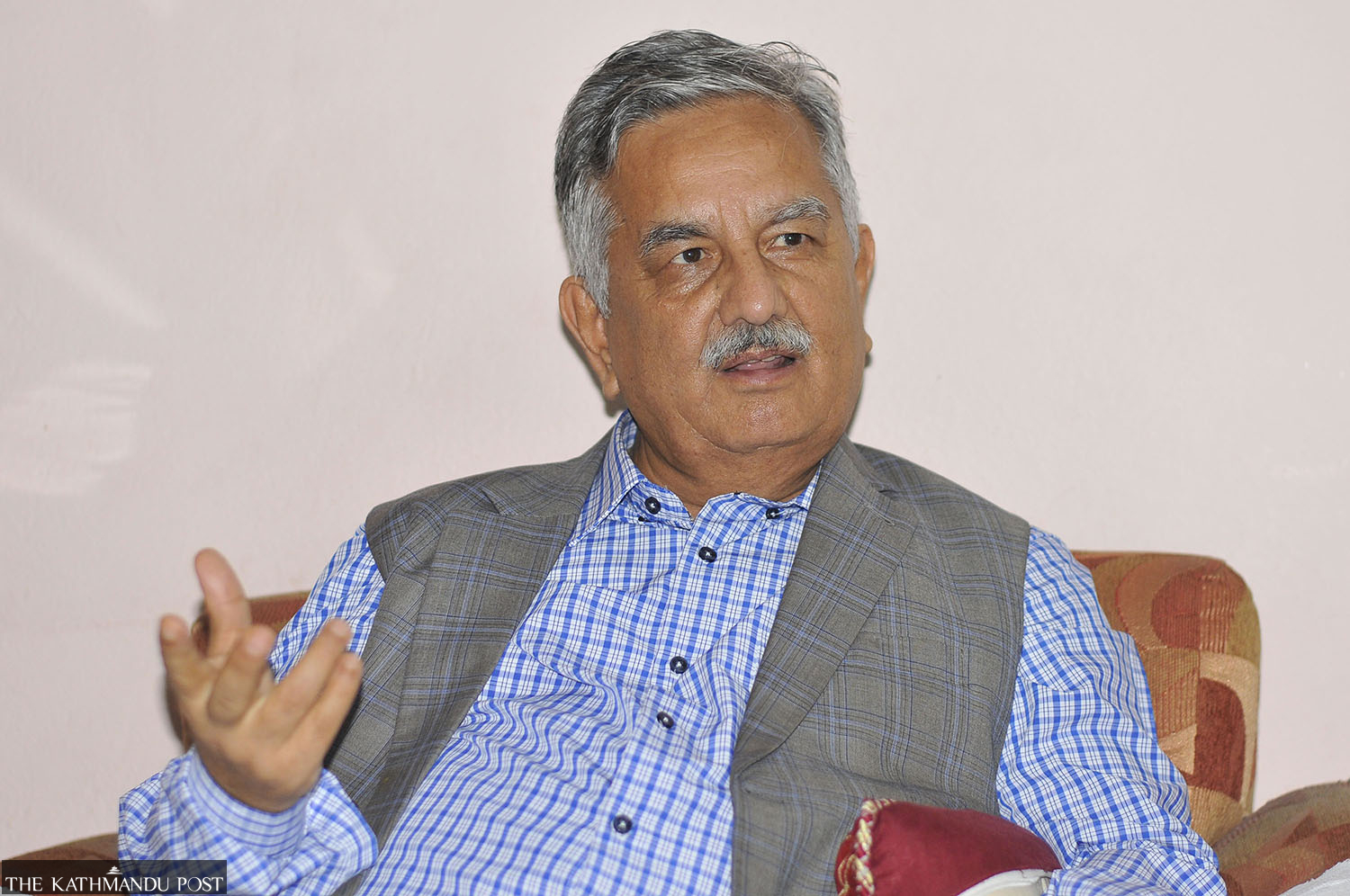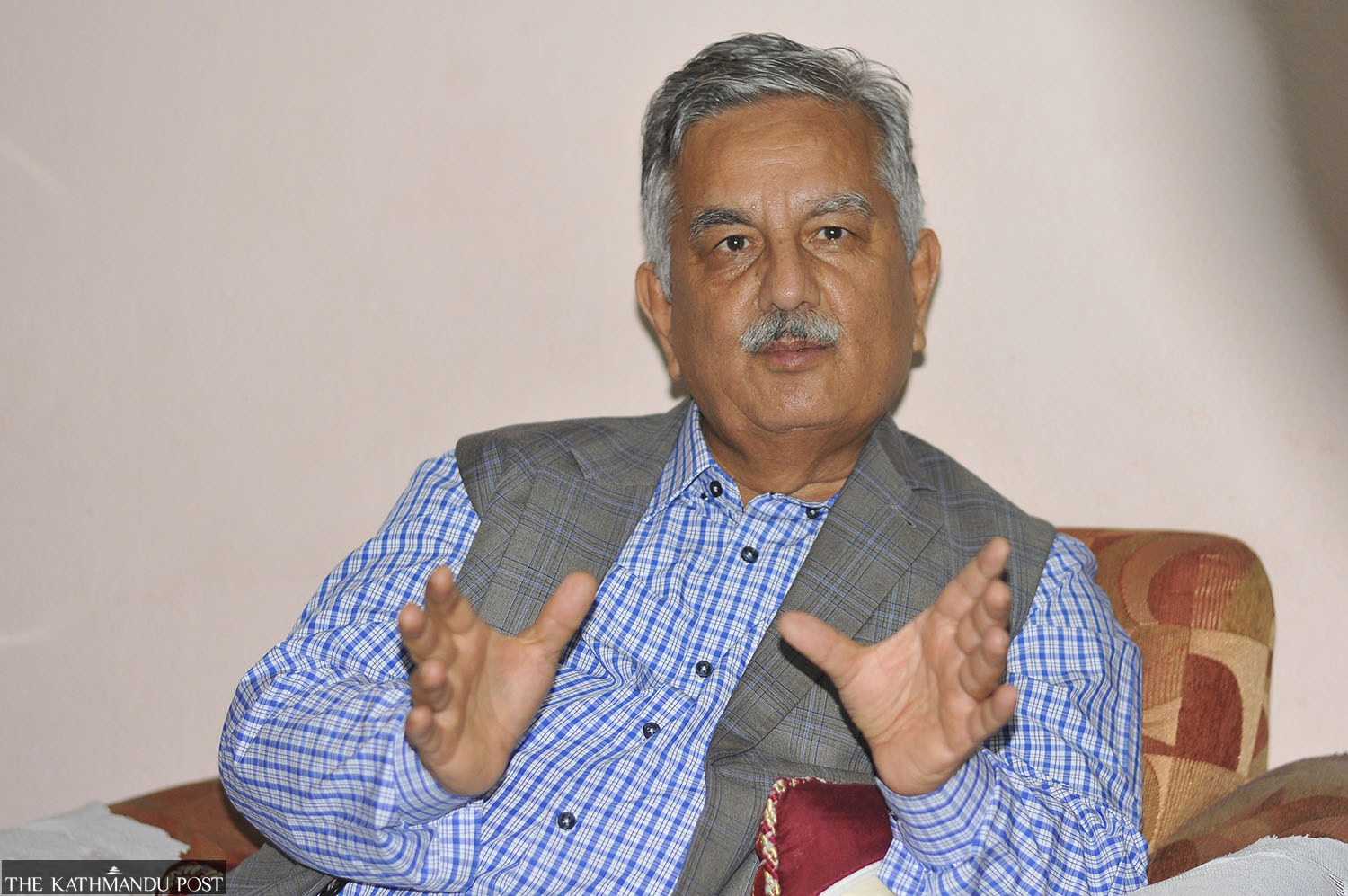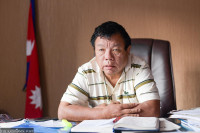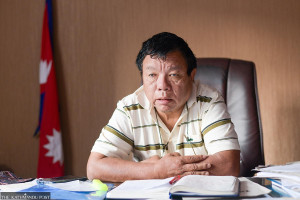Interviews
No budget for mega projects without breaking old structural constraints
The three-decade-old concept of social security scheme needs to be remodelled based on changed social dynamics.
Thira Lal Bhusal
The government’s policies and programmes have already been presented in the federal parliament and the government is busy preparing the country’s budget for the upcoming fiscal year, based on that. In this context, the Post’s Thira Lal Bhusal has asked former finance minister and CPN-UML vice-chair Surendra Pandey how can the budget address the problems of the country’s financial sector, rejuvenate the market and steer the national economy in the right direction.
The government presented its policies and programmes in Parliament earlier this month. Ministers and some experts have said the focus this time is on course correction, with the completion of vital development projects the priority. Do you buy the argument?
Yes, it is different. Note the three key words used in the policy document. It has pledged to make changes in the ‘design, speed and culture’ of our development activities. It has announced plans to either stall or scrape certain projects that were initiated without ensuring budget and to dissolve non-functioning organisations. But the policies and programmes are conceptual. They need to be laid out in concrete terms when the finance minister unveils the budget on May 29. Lawmakers, however, put pressure on the finance minister to allocate budgets for small and scattered projects. The government has announced not to earmark budgets for local projects worth less than Rs30 million from the federal budget.
Have you given any feedback on the policies and programmes and the upcoming budget to the current government?
I have given certain feedback. Lawmakers keep putting pressure on the finance minister for more funds for small scale development projects in their constituencies. This has for years been a headache for finance ministers. So I am in favour of passing a proposal from the Parliament stating that 80 percent of the development budget will be spent on strategic projects of national importance and the remaining 20 percent on retail projects proposed by lawmakers. Once it is passed from the House, the finance minister can say they can’t breach a proposal endorsed from the House, which is like a law. Such an approach has become necessary to manage budgets for mega projects of strategic importance.
Will the lawmakers endorse such a proposal?
It is possible as they can’t defy their respective party’s whip. But it definitely requires political commitment.
Also, going back to your earlier question, we also have to prioritise strategic projects. First, complete one or two big infrastructure projects. Then, go for a few others. This approach gradually increases the efficiency and capacity of our development agencies and other stakeholders. Just declaring some projects as strategic doesn’t work if the government can’t set priorities and have a clear plan to work on them.
For instance, a list of national pride projects were declared even though there was not enough budget for them. This has become a joke. So we should be clear that the government shouldn’t hold all big infrastructure projects where it can’t provide sufficient money. Nepal developed the Pharping hydro-power station in 1911. But in 100 years, the country could develop hydro projects with hardly 400 MW installed capacity. When we encouraged the private sector to invest in the hydro sector, we made good progress, particularly in the past decade and a half. Now we have over 3,000 MW of installed capacity.

This shows that the government shouldn’t try to do everything. After all, the private developers have to hand over the projects to the government after operating them for 30 years. Even if certain other infrastructure projects do not need to be handed over to the government, they can still contribute to society by creating jobs and paying taxes. The third option is to attract foreign investment as even our private sector doesn’t have the capacity to develop mega projects. Our banks, contractors and other agencies have limited strength. The budget should include provisions with this in mind. The policies are oriented in the right direction but we have to wait and see whether the budget can come up with concrete programmes.
In the past, successive governments competed in introducing populist programmes. Based on the policy document, can we expect a course correction this time?
We can’t create new opportunities without first breaking the old structural constraints. Let me explain. The government unveiled a budget of Rs1.86 trillion last year. We announced a plan to collect internal loans worth Rs330 billion, foreign loans worth Rs218 billion, and grants worth Rs52 billion. But we could get only Rs5-6 billion in grants and we are unlikely to get more than Rs70-75 billion in foreign loans. So we have to collect at least Rs330 billion in internal loans. We have to spend over Rs400 billion to pay principal and interests this year alone. We must somehow manage money for this. Additionally, around 900,000 people draw salaries, 700,000 are pensioners, 2.4 million people draw elderly allowances (at the rate of Rs4,000 a month), 900,000 get single woman allowances (Rs2,000 a month).
We have 4.9 million people who need to be paid regular salaries or allowances. We provide nutrition allowances to Dalit children below five years of age and we also have to manage funds for different scholarship schemes. Managing all this we will have nothing left for the development projects. This is the structural limit. So how can the government spend on development projects? On the other hand, citizens expect the government to do everything. Either we have to explore ways to downsize the number of the people being paid by state coffers or explore ways to increase revenue. It is high time that we think out of the box and break these structural constraints.
Can you suggest some ways this can be done?
The country has seen a significant decrease in population. For instance, I was talking to friends from Narayan Municipality of Dailekh district recently. Only 102 babies were born in the municipality this year. These are the total number of kids who will join school after five years if they all stay in the village and are admitted to community schools. But there are 51 schools in the municipality. So, how can these schools be sustainable? We have to change this pattern of funding from the centre.
The mayor and other officials of the municipality said they can’t make any changes because the budget for teachers and other expenses from the government are provided under a fixed structure. They would be able to plan in line with the ground realities if they were given budgets under a flexible title such as ‘education expenses’. They would merge the schools and collect students in a vehicle. They can run schools with better education quality with less budget. For that, they need flexible provisions.

As the villages are linked with roads, why do they need schools without students and health posts with just a few patients in each neighbourhood, where we have to create all infrastructure and manage human resources for a few students and patients? So, we have to redesign our budget expenses.
Of late, you have been consistently saying that the social security schemes have become unmanageable. Has the time come to revisit this three-decade-old concept?
Now, the government appears to be taking some corrective measures. For instance, a recent Cabinet meeting has decided to increase the age of the people to be eligible for elderly allowance from 68 years to 70. This is the right decision which will reduce the number of people eligible to get this allowance by around 200,000. We can bring about such reforms with creative use of National ID cards and poor people identity cards. The needy people can be given more money while those from well-off backgrounds can be removed from this scheme. This policy was introduced to make the life of the elderly people easy but they aren’t spending this money. We have to come up with ideas that inspire people to get involved in certain activities, and spend the money while making their lives more meaningful. It has become a necessity also due to our changed social reality, particularly outward migration. This scheme, which was introduced three decades ago in a different social context, now needs to be remodelled based on a study by a dedicated experts team.
Nepal’s economy has failed to gather momentum for the past couple of years. What can be done to rejuvenate it?
I have given a couple of feedback to the finance minister. Now, our economy suffers from under-consumption. He has to resolutely work to create and increase consumption of all three consumers—the government, the business community and the citizens. Consumption has significantly decreased of late, impacting the whole economy. Increasing consumption and demand is the need of the hour.
First, the government should increase its own consumption, which will automatically increase the consumption of the business community and the general masses. The government should focus on increasing consumption from day 1 of next fiscal year and spend at least Rs300 billion in the year.
But, as you said, the government doesn’t have the money. How does it get that kind of money?
We have to address that through certain policies. For instance, by encouraging town development. We have seven provincial capitals. If the government comes up with a concept, it doesn’t have to put the money. Banks will invest as they have enough liquidity and are looking for safe investment areas. Huge amounts of money are idle in various funds such as Nepal Army Welfare Fund, Nepal Police Welfare Fund. If 50,000 units of houses are built under this scheme, it will rejuvenate our market significantly. This is just an example. We have to think out of the box and come up with new policies and schemes. Traditional and business-as-usual approaches won’t end the ongoing stagnation.




 10.12°C Kathmandu
10.12°C Kathmandu











%20(1).jpg&w=300&height=200)

